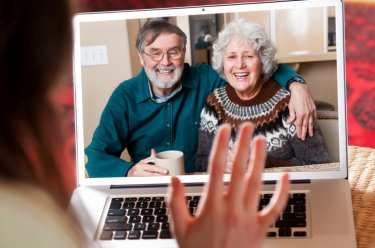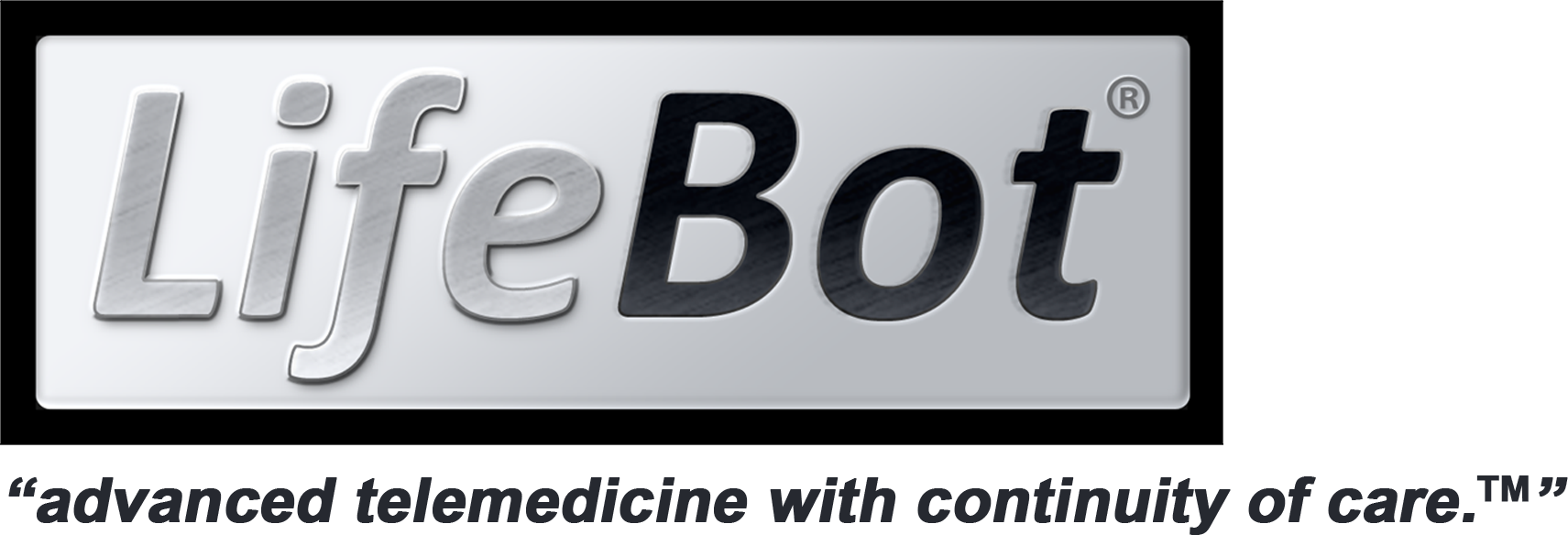
OK, I’ll say it. Health is not skin deep. It’s what’s inside that counts too, sometimes much much more.
Recently a paramedic friend in Texas told me about a day where they took their DREAMS Ambulance to a shopping center to provide open public testing or free health screening as a public service to his community. Most of the people that showed up appeared happy healthy and smiling. But, once he began to hook up subjects to his equipment and look at their vital signs, electrocardiogram, blood pressure, etc., he found many of them had very serious health risks. Most appeared just fine on-the-surface, until then.
“Health is not skin deep. It’s what’s inside that counts too, sometimes much much more.” Roger Lee Heath
Recently my brother went in for surgery on his knee, an old basketball injury. Pretty simple, right? He appeared quite healthy for years. Well, they hooked him up only to find he was a primary candidate for a heart attack and needed a stint from an interventional cardiologist right away to save his life. Previously, this had gone completely undetected.
Just take a look at the photo above. This appears to be a happy healthy couple, unless you find out one has a myocardial infarction (MI) in progress (STEMI) or another has risky tachyarrhythmias or is simply not well perfused and may have an impending risk of stroke. Potentially, it is not as pretty a picture in a strict healthcare context.
Yet, if you look at the prominent telemedicine equipment suppliers today, you may be shocked to find out most have little or no experience in the healthcare field at all; little knowledge of medical devices and acquiring this critical life-saving inside information. Chances are they were ushered into the healthcare industry because someone wanted video conferencing only. A recent television ad shows a patient in an ambulance talking to a doctor in the Emergency Room on a tablet. But, how will this fair as a comprehensive EMS telemedicine system? Most would say generally not very well and perhaps more risky for the healthcare or emergency professional who could make more informed decisions with more complete information. But, who needs urgent care, and who doesn’t? How can these patients be effectively detected and prioritized?
The Main Issue – Care Coordination:
Very recently, I attended a conference at the Cleveland Clinic on healthcare call center development. After almost 40 years working primarily in the Emergency Medical environment I heard terms such as “Care Coordination” and “Patient Care Coordinator”, terms not so common in this industry. Yet, the Emergency Department is really the true front door to most hospitals with up to 80% of patient admissions often occurring there. If one is to reduce medical errors or risks and more clearly determine what level of care a patient needs, how can one go about accomplishing this in a thorough and safe way?
First – Use Really Good Triage and TeleTriage:
Asking the right questions is important. It can save a life. If you don’t, obviously your risks and chances for medical errors are significantly increased. So how do you ask the right questions? How are they properly clinically referenced, and what are the differential diagnoses? How do you quickly drill down a query to make sure a patient in need doesn’t fall through the cracks. The answer is to use proven Decision Support Software (DSS) to help you do this. It can speed your assessments and assure you are deploying a safety net for those patients in urgent need who otherwise might have gone undetected. It can also save time and eliminate “Over Triaging” by making sure exactly the right questions are asked, not a hand-full of questions that may not directly relate to the exact symptoms before you. When attached to a patient’s medical record, it demonstrates adherence to standards of care and significantly lowers provider risks
Put quite simply, the human brain simply cannot reference millions of words of clinically referenced research, but Decision Support Software can, and it can help you do it within just a few minutes to save a life. It can provide for both accurate and early detection of the risks at hand.
Second – Acquire Physiological Data:
Go beyond video teleconferencing by acquiring vital signs data, ECG, 12-lead, pulse ox, blood pressure, video exam cameras, etc. This gives one the ability to look inside and see what is really happening. This is the only objective way to fully assess the risks. Of course, the modern ambulance may do some part of this already, but almost none fully integrate decision supported triage, video, physiological data, and patient medical record charting into one system.
A proper telemedicine system design should also store this important data together. Most systems don’t. In fact many do not record video, much less important patient physiological data. Of utmost importance is for the telemedicine system to “Tag” patient data for each call, encounter or instance so that one patient’s medical record does not get mixed with another’s. Without this feature, risks for the provider are significantly increased.
If you are in a location where there are no fixed or wireless network connections then this is more important, if an intensivist, EMS professional, neurologist, or cardiologist has to assess a patient’s vitals or early symptoms later. If you operate air or ground ambulances or patient transport operations the system, once in route and connecting to networks, should prioritize this critical data and send the most important life-saving information first to the hospital. Then faster more accurate responses to the problems at hand are assured.
Third – Send the Data “Real-Time”
Ideally critical patient data should be provided Real-Time or “Live”. If you have to send the data to a server somewhere, and critical care professionals have to take the extra time to separately locate that patient’s data, this only prohibits or delays prompt assessments and patient care. The data should be made immediately “Usable”. The difference may be life-saving. In addition, there can be additional costs associated with server services. Patient confidential medical record information may also be more protected when shared with only the select parties or the professionals involved.
Fourth – ePCR EHR (Electronic Health Record) and Data Portability:
In an age where EHR and patient charting has become such an important central focus, a proper telemedicine system design should not only store this critical data, but also allow you to forward the data immediately. An example of this is the sending of a 12-lead ECG to activate a STEMI Alert at a hospital cath lab. The system should allow for full data portability, or the ability to save all this information as one complete report. Then complete information, video and physiologic data, may be attached to the patient’s medical record very efficiently.
It is far better to minimize long-term costs and adopt one system that does it all at the outset.” Roger Lee Heath
In proper telemedicine design, One System should do it all. The alternative is to try and adapt or cobble together many different video, data and charting components, a real mess. ePCR, EHR, video and data from separate systems can only manufacture a nightmare for Data Portability and delay critical patent care. This also sets the stage for major inefficiencies and running up major costs of deploying telemedicine systems. It is far better to minimize long-term costs and adopt one system that does it all at the outset.
Fifth – Video Conferencing is Important
Video Teleconferencing in healthcare is invaluable, but is just one component in a true comprehensive telemedicine system. That is the opinion, at least, of many who have invested a lifetime in delivery of quality patient care. As put forth by one Medical Director, “A picture is worth a thousand words, but perhaps a video is worth a million words.” A video is the central component in many patient assessments. It is essential in trauma and disaster management to assess method of injury, the patient’s exact state, situational awareness, what disaster and rescue assets are on the scene, and much more. It may even provide for legal protection of medical and rescue personnel, similar to the experience of law enforcement. Video recording may pay for itself over-night in such a situation.
But, Health is not skin deep. It’s what’s going on inside that counts, sometimes much much more.
About:
The above commentary was put together by R. Lee Heath, best known as the inventor making possible the modern Automatic External Defibrillator (AED). His company, LifeBot® is involved in the design and deployment of advanced communications telemedicine hubs and call centers for healthcare coordination.
![]() Download-Print Adobe PDF Version
Download-Print Adobe PDF Version
LifeBot® provides exclusive patented and military developed telemedicine solutions for emergency management of hospital-to-ambulance and hospital-to-home communications. These systems are used to send and receive live video, voice and patient vital-sign data transmissions primarily in support of heart, trauma and stroke victims in ambulances. The company’s patents focus on extension of these life-saving systems into consumer use in the home and business.
The systems are also designed for management of major crises, disasters and emergencies by hospital based and field public safety emergency professionals and for the U.S. Military in battlefield operations. We integrate next generation broadband capabilities not inherent in today’s interoperative digital radio communications so the benefits of achieving telemedicine, telehealth, and emergency preparedness objectives may all be fully realized. To learn more about these systems, please contact us.
